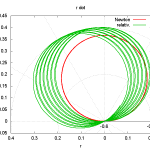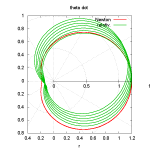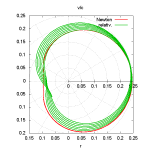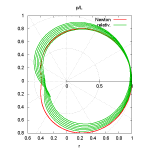These are excellent results and graphics, proving conclusively that special relativity can produce orbital precession. So orbital precession is not a conclusive test of Einsteinian general relativity, because it can be produced by special relativity. It is also known that Einstein’s mathematics are riddled with errors which are well known and can no longer be just ignored. To do that is unscientitic.These are major advances as can be seen from the intense interest in the latest UFT papers. I think that the best way forward is to use (p / L) squared and gamma from these computer results in Eq. (14) of Note 328(5). It is very interesting to see the difference between the relativistic and classical p / L. The orbital precession is very clear from these results. Also the graphs of r dot and theta dot are important and interesting.
To: Emyrone@aol.com
Sent: 28/09/2015 21:29:03 GMT Daylight Time
Subj: p/L and other quantities in relativistic contextI compared the results of the Newtonian Lagrange eqautions with those of
the relativistic Lagrangian. Initital conditions were the same, and
angular momenta were also the same. It is not possible to use L0 in the
relativistic equation because this is not a constant of motion there.
From Fig.7 (orbits) it can be seen that the relativistic orbit is
significantly larger for the same intial conditions. This is a hint that
it makes no sense to use an equation for the non-relativistic orbit (p0
in note 328(5)) in a relativistic context.
Fig. 10 shows gamma(theta), this varies only between 1.00 and 1.03.
However the orbital precession is significant, see Fig. 7. The
quantities rdot, theta dot, v/c resemble each other, there is a bend at
the aphelion. This also holds for p/L (Fig. 13).
I will see which anlaytical results can be compared with these curves,
for example extracting a precession parameter.Horst
- fig7
- fig8
- fig9
- fig10
- fig11
- fig12
- fig13






